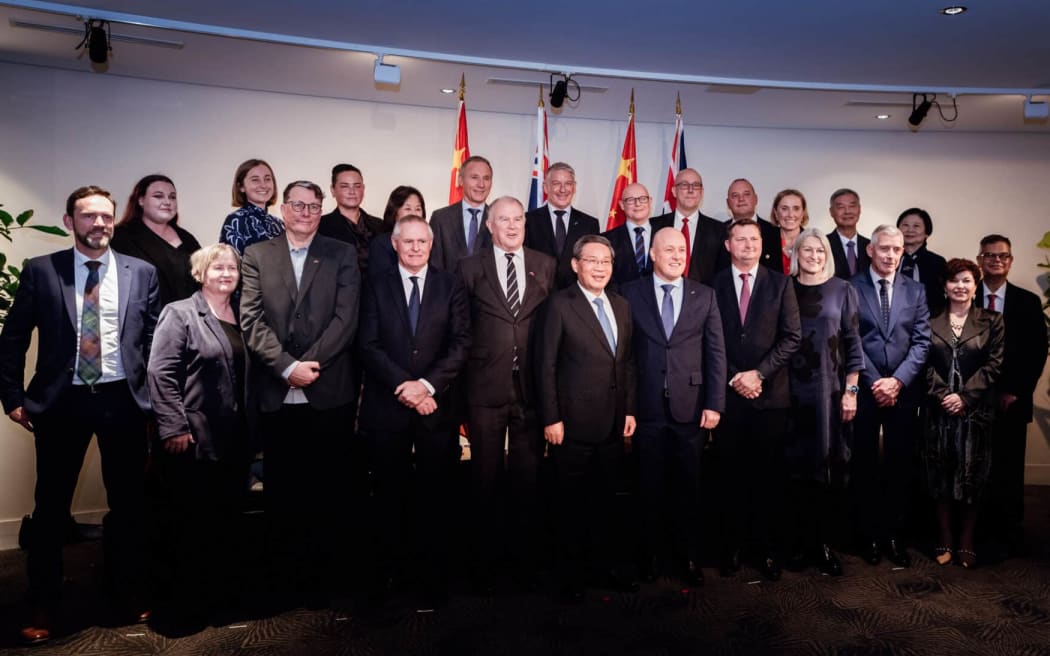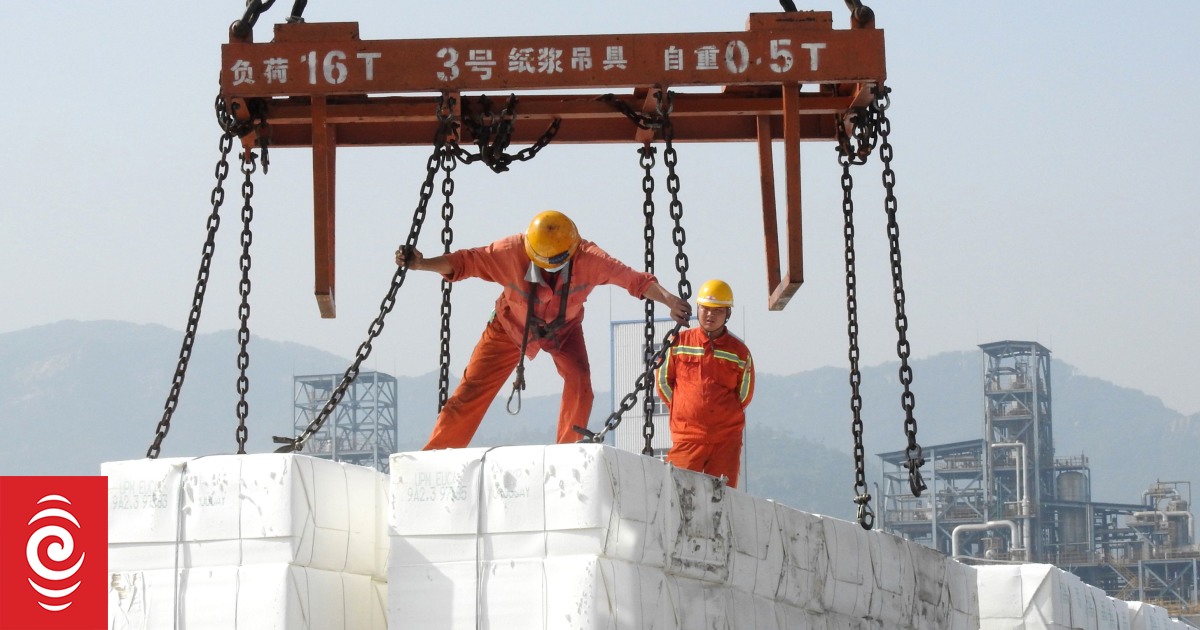Photo: AFP
A report released Wednesday believes it is difficult for New Zealand to untangle itself from importing a large volume of goods from China due to the Asian trading giant’s presence in regional supply chains.
However, the report said New Zealand faced “no strategic risk” from current import levels from China.
Titled Sourcing from the World’s Factory: Our Import Relationship with China, the report was commissioned by the New Zealand China Council.
China was New Zealand’s largest export and import market, although the proportional dominance of overall imports was lower, the report said.
China accounted for 16.5 percent of New Zealand’s total imports against 27 percent of total exports, it said.

John McKinnon, chair of the New Zealand China Council
Photo: Supplied
But John McKinnon, chair of the council, said New Zealand was not at risk of being overly dependent on China for imports.
“Only 3 percent of our imports are in products where China could be assessed as very dominant – and these are mostly consumer items (toys, lamps) where potential disruption would be unlikely to pose a systemic risk to [New Zealand’s] economy,” he said.
While it was not necessary for New Zealand to diversify its source of imports, McKinnon believed that “any business with a heavy reliance on one source for its product … may decide it is prudent to have other sources of supply at hand”.
The report mentioned several benefits associated with imports from China, including cost-effective contributions to New Zealand’s decarbonisation efforts that could be achieved with Chinese environmental tech products.
Electric vehicle imports had been increasing, while China also supplied 89 percent of New Zealand’s solar PV panels and components in 2023, up from 49 percent in 2014.
The report said goods such as electrical equipment, machinery and textiles from Southeast Asia would typically include a 10-20 percent contribution from China through raw materials and other inputs.
Even electronic goods from Mexico included 27 percent contributions from China, it said.

Chinese premier Li Qiang met members of the New Zealand China Council in Auckland on 14 June.
Photo: Supplied / NZCC
Economist Brad Olsen said it was important to know that New Zealand didn’t have an overreliance on Chinese imports for most goods.
“Supply chains can take a long time to fully pivot and adjust, and so a high share of imports coming from any one country raises risks of supply chain disruption,” Olsen said.
Although the report showed that toys, lamps, light fittings, and plastic household items from China were what New Zealand relied on the most, items such as mobile phone and computers could pose greater concern.
China currently supplies 59 percent of all mobile phones to New Zealand, and 73 percent of computers.
Olsen said trade activity globally looked far more fraught in more recent years than over the past few decades, with trade these days increasingly linked to geopolitical conflict than before.
“Businesses in New Zealand are always – and should always be – keeping an eye on these global trends to ensure that they are able to keep operating and know the risks to their operations,” he said.

Murat Üngör from the Department of Economics at the University of Otago.
Photo: Supplied
Murat Üngör from the Department of Economics at the University of Otago said diversification was not the same as changing the volume of trade with different economic partners.
“A true diversification strategy should involve enlarging the size of the pie (increasing productivity and economic growth in New Zealand) and sharing that pie with several others (having multiple trade partners and multiple free trade agreements),” Üngör said.
“New Zealand’s trade policy should take a proactive approach, establishing new economic partnerships as well as strengthening existing ones.”
He said an effective strategy could be for New Zealand to sign trilateral economic, investment and trade agreements with China and another country in the region.
Üngör also noted the implications of geopolitical tension in recent times, saying the ongoing trade war between US and China “created significant risks for New Zealand companies”.

Photo: Supplied
Leo Liao, a senior law lecturer at the University of Waikato, said the government should respect the country’s free market-oriented economy.
“The government shall not, based on some ideology or whatever, interfere with private business choices in selecting the market or suppliers,” Liao said.
“The fact that the Chinese market is the number one source of imports suggests that this is the choice of many New Zealand importers or consumers in New Zealand.”
Trade minister Todd McClay said China had proven itself to be a strong and cost-competitive supplier, particularly for manufactured goods.
He said the country’s trade policy had focused on expanding market access for exporters.
However, due to New Zealand’s minimal tariff profile, there had not been the same degree of focus on import market diversification.
“Ultimately, commercial decisions to export to or import from any particular market rest with businesses,” McClay said.
“Government encourages businesses to regularly consider the risks of over-reliance on any one market.”
A combination of trade in both directions makes China New Zealand’s largest bilateral trade partner, with two-way trade in the year to March 2024 totalling $35.1 billion, double that of our next largest trade partner Australia, at NZ$17.5 billion, and the United States, at NZ$16.1 billion.
In 2023, New Zealand imported $17.2 billion worth of goods and services from China, just ahead of $16.2 billion from Australia. Imports from China were almost exclusively goods instead of services.
The report was written by economic consultancy Sense Partner.

